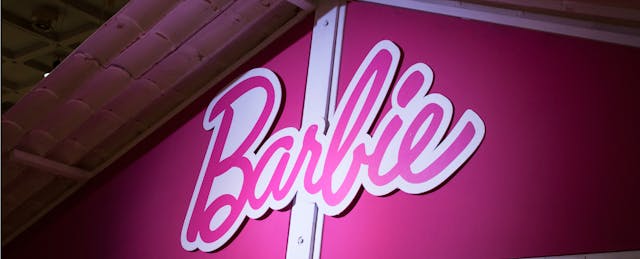Musician. Astronaut. Pastry Chef. Robotics Engineer. Farmer. Beekeeper. Those are the six “professions” kids will be able to undertake alongside Barbie, the job-hopping doll known for her many careers, in a new class on Tynker, a platform that teaches children how to code.
Tynker CEO and co-founder Krishna Vedati tells EdSurge that users can customize features such as skin color of the virtual Barbie that guides them through lessons. The course, which he thinks kids can finish in seven hours, is free of charge. The intended audience is girls ages five and older. “Barbie is a girl brand,” Vedati says.
The partnership ties into where the almost five-year-old company sees itself in the future.
A spokesperson for Tynker tells EdSurge that Mattel funded Tynker to produce the course, and Mattel created “all Barbie assets.” The storyline was developed in partnership with Tynker.
This is not the first time the two companies have partnered. They initially came together in 2015 when they created coding activities around Mattel’s Hot Wheels and Monster High brands. And in 2017, they teamed up for Computer Science Education Week Hour of Code to teach kids “basic programming concepts by casting them as veterinarians alongside Barbie,” per a Tynker announcement. (Mattel and Tynker will be supporting Hour of Code again for this year’s event, the spokesperson for Tynker says.)
According to a press release from Mattel, the two companies will host a digital event in the future to encourage more kids to pick up coding, and will “also work together to provide teachers with the tools needed to leverage this content in the classroom.”
Mattel’s past attempts to make coding cool have flopped for some, such as Casey Fiesler, an assistant professor in the Department of Information Science at the University of Colorado Boulder. In a 2014 Slate article, she wrote that a book Mattel put out that linked Barbie to computer science missed the mark. Barbie came “across as completely incompetent when it comes to computers,” wrote Fiesler, and when she “inadvertently infect[ed] her own computer with a virus,” she needed help from two boys to fix it. Critiques of the book, first written about by blogger Pamela Ribon, later went viral and was featured widely across the internet.
Writing again for Slate in 2016, Fiesler had a positive take on “Game Developer Barbie,” a doll released that year. However, her only disappointment was that “Mattel didn’t take this opportunity to partner with some computing education folks to suggest that not only can kids be game developers when they grow up—that they can be game developers right now!”
Vedati believes the partnership with Mattel connects to his company’s broader goal of getting kids to become makers—however they define it. “We’re not saying that you have to learn to code,” he says, explaining that Tynker wants kids to make something, and understand that coding is a tool they can use to do so.
Tynker is exploring a long-term business relationship with Mattel, and is interested in partnerships with other companies as well. Examples of other partnerships the company has conducted include drone-maker Parrot and LEGO. Tynker works with big tech companies too—Apple designed two of the free courses on its platform, and Google Classroom integrates with Tynker.
What won’t be in Tynker’s future, however, is manufacturing toys, though Vedati says it’s created prototypes a few with partners, and is interested in other brands creating programmable toys, such as a programmable Barbie house. “We are purely” focused on software and content, he says.
Tynker has been profitable the past year, though Vedati declined to give details. Vedati says it’s possible the company will raise more money to expand the company, which currently has more than thirty members, and has offices in Chicago, Portugal and Mountain View. He says that as the company’s user base expands, one challenge will be figuring out how to build a large, sustainable business model. Tynker claims that to date, more than 60 million kids have used its platform. By 2020, it hopes to increase that number to 100 million kids. Another of Vedati’s challenges is perhaps all too familiar for edtech companies: creating personalized learning experiences for each child on the platform.
“We’re constantly understanding the data and trying to figure out models and how to give programmable experiences to kids, learning experiences that are unique for every child.”


